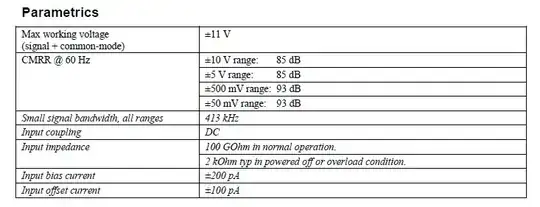Common mode rejection ratio (CMRR) does not give you an absolute common mode error. What it does tell you is how much common mode signal (which is usually noise or some bias voltage) is attenuated. For example, 85dB CMRR means that signal common to both differential pins attenuated \$10^{\frac{85\text{dB}}{20}} \approx 17782\text{ times}\$. You can apply that to your common mode signal to find the common mode error. This applies to differential and single ended systems. If you're asking this question, you should be making differential measurements.
As to the difference between LLGND and GND, I'm not going to sift through that manual to find the difference between the two, but one is probably analog and the other digital. In practice you can probably connect them if they're not already connected on the card. Grounding does not effect the CMRR.
